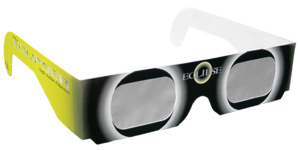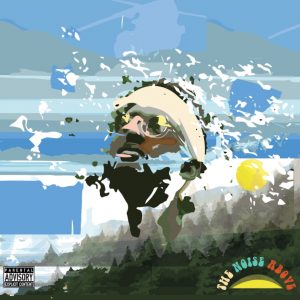When a group of upstart colonists declared their territories independent of the British Crown on July 4, 1776, they did it in a petition addressed to King George III. In the weeks following, this Declaration of Independence was reprinted, discussed and debated both in the colonies and in Britain, in newspapers, letters, pamphlets, and broadsides.
You can now read those debates and discussions, and see them scanned online, whether celebratory, like a news item from New York:
We hear from Ticonderoga that on the 28th of July, immediately after divine Worship, the Declaration of independence was read by Colonel St. Clair, and having said, “God save the Free Independent States of America!” the army manifested their Joy with three Cheers. It was remarkably pleasing to see the Spirit of the Soldiers so raised after all their Calamities, the Language of every Man’s Countenance was, now we are a People! We have a Name among the States of this World.
New York, August 19, 1776. New York Gazette and Weekly Mercury.
or dismissive, as in an essay written by Tory Governor of Massachusetts Thomas Hutchinson:
They begin with a false hypothesis, That the Colonies are one distinct people and the kingdom another, connected by political bands. The colonies, politically considered never were a distinct people from the kingdom. There never has been but one political band, and that was just the same before the first Colonists emigrated as it has been ever since.
Hutchinson, Thomas, Strictures up the declaration of the Congress at Philadelphia, 1776.
These essays and much more are available in two of our newest licensed online collections:
America’s Historical Newspapers, and
Eighteenth Century Collections Online.
America’s Historical Newspapers (Series I, 1690-1876) spans an extraordinary period in our history, from the Salem Witch trials to post-Civil War reconstruction. With newspapers from every part of the United States, scanned from more than 90 repositories including the Library of Congress and the American Antiquarian Society, from Benjamin Franklin’s
Pennsylvania Gazette to Alexander Hamilton’s
New York Evening Post, this collection offers Northeastern researchers the first draft of American history.
 Eighteenth Century Collections Online
Eighteenth Century Collections Online is the place to look for British perspectives. Based on the English Short Title catalog, it offers scans of works published in Britain 18th century, plus English language publications from other parts of the world. The period encompasses Boswell’s
Life of Johnson, Hume’s
History of England, and an early how-to: Best’s
Concise Treatise on the Art of Angling. With printed books, pamphlets, essays, and broadsides, this collection complements another important collection,
Early English Books Online, to offer Northeastern researchers an online library encompassing almost the entire printed record of the English Renaissance as well as the English Enlightenment.
Exploring these two newly licensed collections allows us to understand, from the point of view of the people living at the time, the bonds that united Britain and America, as well as the forces that pulled us asunder.
 On August 21, the earth’s moon passes in front of the sun and parts of the United States will experience a total eclipse for the first time since 1979.
Here in Boston, we’re not in the “path of totality”–we’ll see just a partial eclipse. The sun will only be 63% covered by the moon and we won’t experience the midday darkness. More importantly, we won’t be able to look directly at the eclipse because so much of the sun will be exposed–it will be dangerous to look directly at sun’s rays behind the moon.
How can you view the eclipse safely?
If you have a pinhole camera, which you can make with a cardboard box, a digital SLR camera with a pinhole cap, or even two sheets of paper, you’ll be able to see the partially eclipsed sun as a crescent-shaped gleam projected onto a surface opposite the pinhole.
You can also take pictures with a cell phone or digital camera (use a solar filter to avoid heat damage to the camera) as long as you don’t look directly at the sun while you’re doing it.
And if you do want to look at the eclipse with your eyes, eclipse glasses will be available on a first-come, first-served basis at Snell Library on Monday beginning at noon or you can attend the events hosted by the NU Physics Department or Boston Public Library
On August 21, the earth’s moon passes in front of the sun and parts of the United States will experience a total eclipse for the first time since 1979.
Here in Boston, we’re not in the “path of totality”–we’ll see just a partial eclipse. The sun will only be 63% covered by the moon and we won’t experience the midday darkness. More importantly, we won’t be able to look directly at the eclipse because so much of the sun will be exposed–it will be dangerous to look directly at sun’s rays behind the moon.
How can you view the eclipse safely?
If you have a pinhole camera, which you can make with a cardboard box, a digital SLR camera with a pinhole cap, or even two sheets of paper, you’ll be able to see the partially eclipsed sun as a crescent-shaped gleam projected onto a surface opposite the pinhole.
You can also take pictures with a cell phone or digital camera (use a solar filter to avoid heat damage to the camera) as long as you don’t look directly at the sun while you’re doing it.
And if you do want to look at the eclipse with your eyes, eclipse glasses will be available on a first-come, first-served basis at Snell Library on Monday beginning at noon or you can attend the events hosted by the NU Physics Department or Boston Public Library that looking for a book could lead to the recording of a full-length album?
This was the experience of Tirelle Barron, a New York based artist currently in his fifth year at Northeastern University, majoring in Design. As Tirelle was perusing Snell Library, he walked into the Digital Media Commons
that looking for a book could lead to the recording of a full-length album?
This was the experience of Tirelle Barron, a New York based artist currently in his fifth year at Northeastern University, majoring in Design. As Tirelle was perusing Snell Library, he walked into the Digital Media Commons